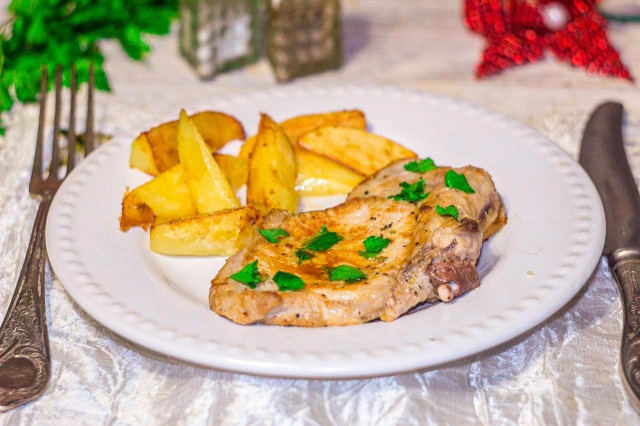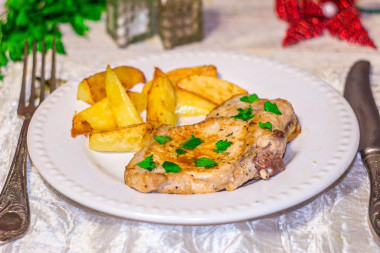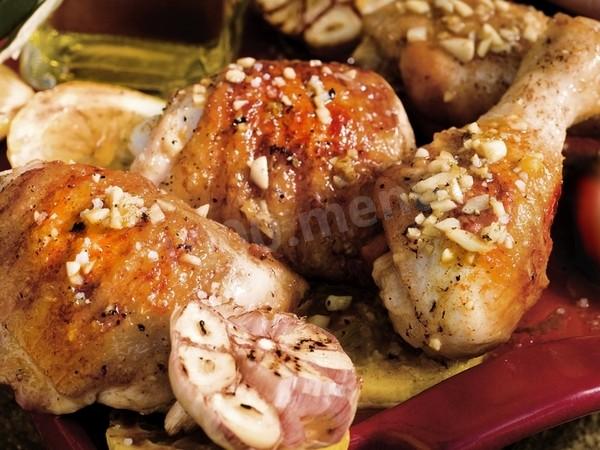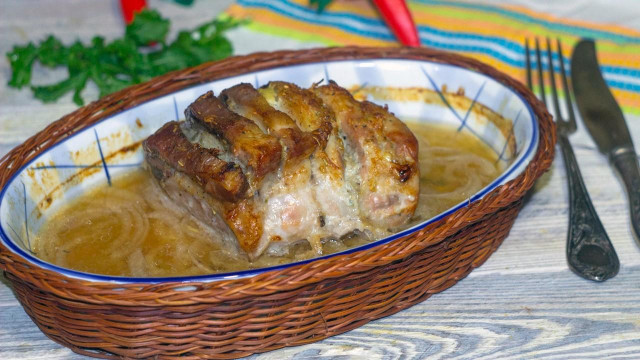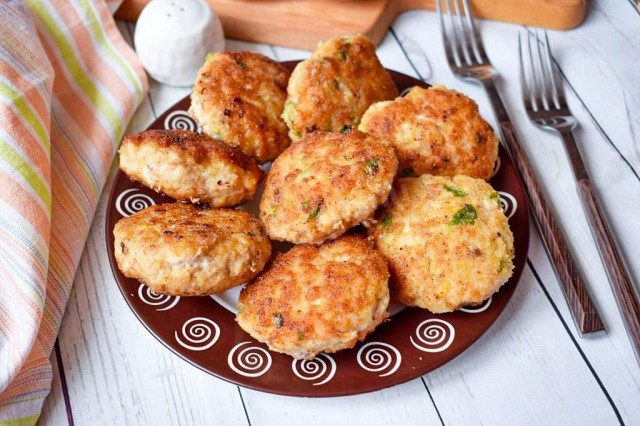Composition / ingredients
Step-by-step cooking
Step 1:

How to fry pork entrecote in a frying pan? Prepare the products according to the list. Choose high-quality meat. If necessary, defrost it in advance. The thickness of the entrecotes should be approximately 15 mm. You can replace cognac with rum or whiskey. Take any vegetable oil, but refined.
Step 2:

Wash the meat, dry it well and transfer it to a well-heated frying pan with vegetable oil. Fry the meat for 3-4 minutes on high heat.
Step 3:
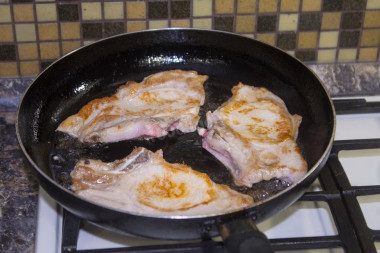
Flip the meat entrecotes to the other side.
Step 4:

Salt each piece.
Step 5:

Pepper.
Step 6:
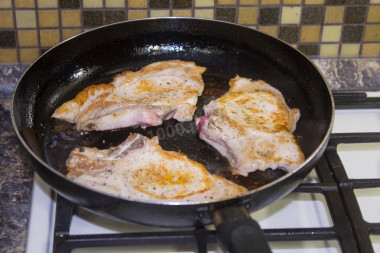
If you wish, you can add some aromatic herbs, I added a little rosemary - it fits perfectly with this dish. Fry the meat for another 2-3 minutes.
Step 7:

Pour cognac into the pan.
Step 8:
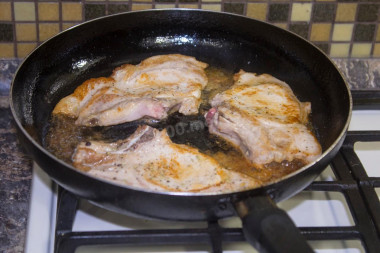
Bring the liquid contents of the pan to a boil, wait 1 minute.
Step 9:
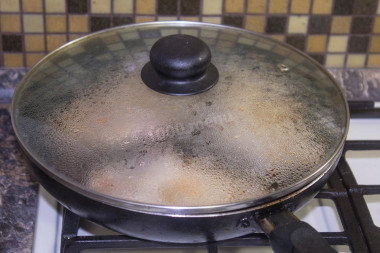
Turn off the stove, cover the pan with a lid and leave it to rest for 5 minutes.
Step 10:
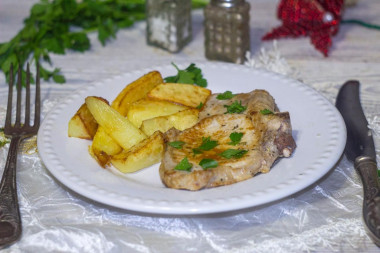
After that, serve the entrecote hot, sprinkling it with fresh chopped herbs. As a side dish, we like to serve fried potatoes with it. But absolutely any vegetables, fried, boiled, baked, raw, pickled, as well as salads, will fit here.
Step 11:

Bon appetit!
Note that the quality and taste of the finished dish largely depends on the proper defrosting of the ingredients. How to avoid mistakes and choose the best way, read the article about defrosting.
If you use ready-made spice mixes, be sure to read the composition on the package. Often, salt is already present in such mixtures, take this into account, otherwise you risk over-salting the dish.
Use oil with a high smoking temperature for frying! Any oils are useful only until a certain temperature is reached - the point of smoking, at which the oil begins to burn and toxic substances, including carcinogens, are formed in it.
Unrefined oils, with rare exceptions, have a low smoking point. There are a lot of unfiltered organic particles in them, which quickly begin to burn.
Refined oils are more resistant to heating, and their smoking point is higher. If you are going to cook food in the oven, on a frying pan or grill, make sure that you use oil with a high smoking point. The most common of the oils with a high smoking point: refined varieties of sunflower, olive and grape.
Caloric content of the products possible in the composition of the dish
- Pork fat - 333 kcal/100g
- Pork meat - 357 kcal/100g
- Pork - low-fat roast - 184 kcal/100g
- Pork chop on a bone - 537 kcal/100g
- Pork - schnitzel - 352 kcal/100g
- Pork shoulder - 593 kcal/100g
- Boar's leg - 113 kcal/100g
- Pork - 259 kcal/100g
- Ground black pepper - 255 kcal/100g
- Vegetable oil - 873 kcal/100g
- Ordinary cognac "three stars" - 239 kcal/100g
- Cognac - 239 kcal/100g
- Rosemary dry - 131 kcal/100g
- Table salt - 0 kcal/100g

